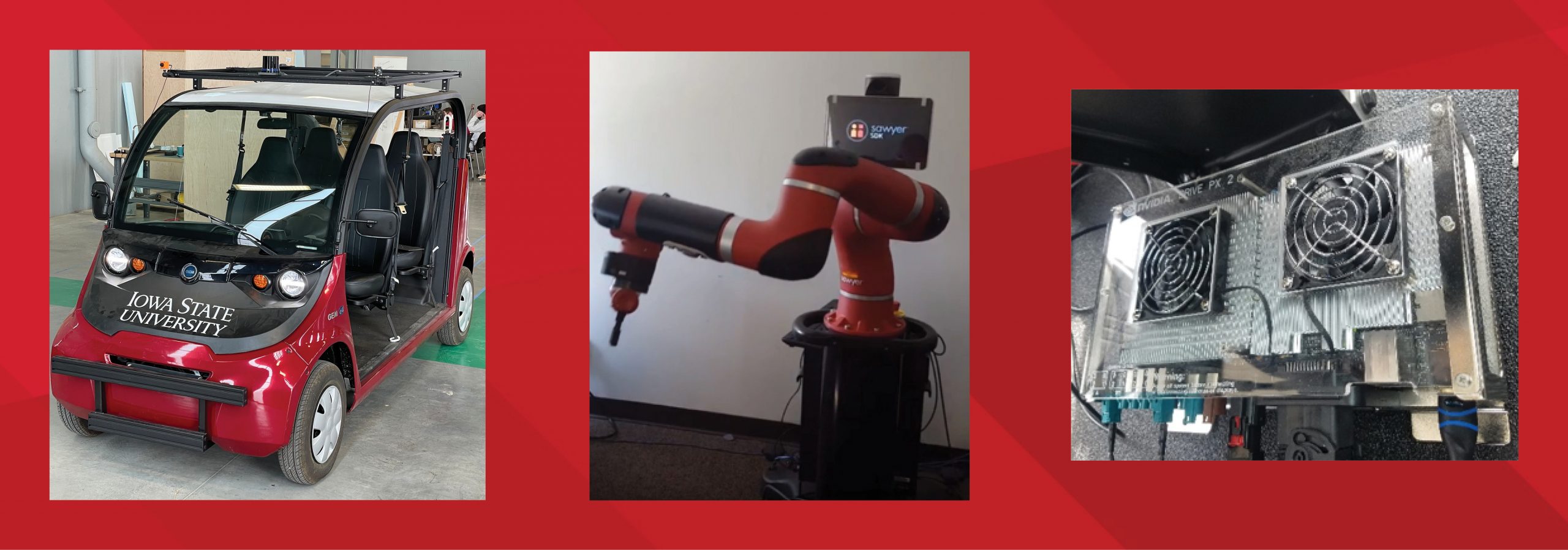With the fourth industrial revolution upon us, physical systems are being designed to have a cyber component, that enables remote access, monitoring and control. In these systems, ubiquitous sensing, and advanced data management capability are taking us from automation to autonomy via a deep interconnection between the cyber and physical entities. Cyber-physical systems (CPS) are becoming abundant in many application sectors including manufacturing, energy, health care, transportation and agriculture. Safety-, time- and life-critical systems are relying on CPS concepts to become more efficient, robust, resilient, flexible and scalable. As CPS applications become more vital, students with a background in CPS will be in demand to design, produce and maintain these systems.
With this motivation and encouraged by the demand from the industry stakeholders of ISU College of Engineering, this CPS minor will focus on sensing, advanced information processing (data analytics and machine learning), and controls aspects of Cyber-Physical Systems. Specific CPS application sectors such as energy/power systems, manufacturing, biomedical devices, autonomous systems, transportation, and agriculture will be in focus.
Students with a minor in CPS will complete 15 credits, 9 of which will come from three required 3-credit courses. The remaining 6 electives come from a range of options as indicated below, including courses that count towards majors. A minimum of 6 credits must be from courses 300 level or above.
*Currently this minor is only available to students in the College of Engineering*
Required Courses
CPS/ME 2800X: Design and Analysis of Cyber-Physical Systems
Initially will be offered by ME, cross-listed with ECPE, AeroE and potentially other Engineering departments
(2-2), Cr. 3.
Prereq: ENGR 1600 (or equivalent), PHYS 2210 or PHYS 2310+L
Course description: This course will introduce the basic concepts of cyber-physical systems (CPS); physical and cyber considerations and constraints for design, analysis, performance monitoring and control of human-engineered physical systems; basic concepts of sensing, information processing and feedback actuation. There will be substantial hands-on computer programming activity relevant to CPS applications.
CPS/CPRE 2870X: Cyber-Physical System Fundamentals
Initially will be offered by ECPE, cross-listed with ME, AeroE and potentially other Engineering departments
(3-0), Cr. 3
Prereq: ENGR 1600 (or equivalent), PHYS 2210 or PHYS 2310+L
Course description: Fundamentals of cyber-physical systems, including introduction to digital systems design, embedded platforms and programming, sensing and actuation, and performance analysis; Introduction to data communication concepts, including systems-level view of signal processing and electronic circuits, networking standards and protocols. Laboratory exercises with embedded circuits, signals, and measurement applications.
CPS/AERE 3640X: Cyber-Physical Systems Application
(2-2) Cr. 3. S.
Prereq: ENGR 1600 or equivalent course; credit or enrollment in MATH 2670; knowledge of Python.
Fundamental principles of cyber-physical systems and their system-level applications at an introductory level; introduction to radio control systems and control of actuators; computer programming of physical systems; data processing and communication; control loops; X-by-wire control systems; simulation; testing of control loops.
Note: Knowledge of Python may be demonstrated by having taken course using Python at ISU or elsewhere, including other CPS courses ME 2800X, CPR E 2870X, or independent learning.

